Related Research Articles
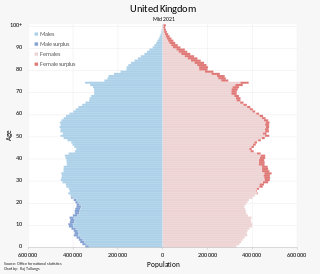
The population of the United Kingdom was estimated at almost 67.6 million people in 2022. It is the 21st most populated country in the world and has a population density of 279 people per square kilometre, with England having significantly greater density than Wales, Scotland, and Northern Ireland. Almost a third of the population lives in south east England, which is predominantly urban and suburban, with about 9 million in the capital city, London, whose population density is just over 5,200 per square kilometre.
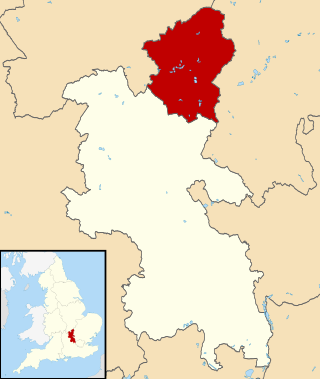
The City of Milton Keynes is a unitary authority area with both borough and city status, in Buckinghamshire. It is the northernmost district of the South East England Region. The borough abuts Bedfordshire, Northamptonshire and the remainder of Buckinghamshire.

Waltham Abbey is a town and civil parish in the Epping Forest District of Essex, within the metropolitan and urban area of London, England, 13.5 miles (21.7 km) north-east of Charing Cross. It lies on the Greenwich Meridian, between the River Lea in the west and Epping Forest in the east, with large sections forming part of the Metropolitan Green Belt.
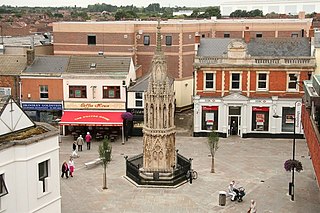
Waltham Cross is a town in the Borough of Broxbourne, Hertfordshire, England, located 12 miles (19 km) north of central London. In the south-eastern corner of Hertfordshire, it borders Cheshunt to the north, Waltham Abbey to the east, and Enfield to the south.
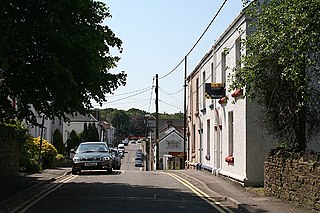
Gowerton is a large village and community, about 4 miles (6 km) north west of Swansea city centre, Wales. Gowerton is often known as the gateway to the Gower Peninsula. Gowerton's original name was Ffosfelin. The village falls within the Gowerton electoral ward of the City and County of Swansea Council, which elects one councillor. The community had a population of 5,212 and the built-up area with Waunarlwydd 8,183.

Field Dalling is a village and civil parish in the English county of Norfolk. The village is located 4.5 miles (7.2 km) west of Holt and 23 miles (37 km) north-west of Norwich.
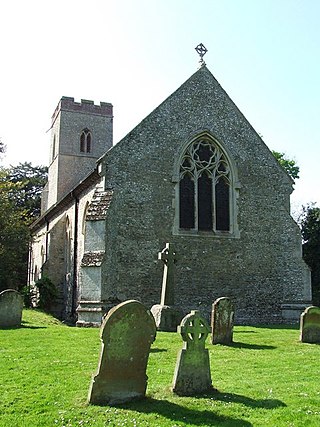
Congham is a village and civil parish in the English county of Norfolk. It is situated some 6 miles (10 km) east of the town of King's Lynn and 34 miles (55 km) west of the city of Norwich.

The demography of London is analysed by the Office for National Statistics and data is produced for each of the Greater London wards, the City of London and the 32 London boroughs, the Inner London and Outer London statistical sub-regions, each of the Parliamentary constituencies in London, and for all of Greater London as a whole. Additionally, data is produced for the Greater London Urban Area. Statistical information is produced about the size and geographical breakdown of the population, the number of people entering and leaving country and the number of people in each demographic subgroup. The total population of London as of 2021 is 8,799,800.

Gayton is a village and civil parish in the English county of Norfolk. The village is located 6 miles (9.7 km) east of King's Lynn and 32 miles (51 km) north-west of Norwich, along the Gaywood River and the B1145 between King's Lynn and Mundesley.

The demography of Birmingham, England, is analysed by the Office for National Statistics and data produced for each of the wards that make up the city, and the overall city itself, which is the largest city proper in England as well as the core of the third most populous urban area, the West Midlands conurbation.

The City of Preston, or simply Preston, is a local government district with city status in Lancashire, England. It lies on the north bank of the River Ribble and has a population of 151,582 (2022). The neighbouring districts are Ribble Valley, South Ribble, Fylde and Wyre.

Bradford, England is an ethnically and culturally diverse city. The City of Bradford metropolitan borough is the sixth most populous local authority district in the United Kingdom, and includes not only Bradford but also the towns and villages of Keighley, Shipley, Bingley, Ilkley, Haworth, Silsden, Queensbury, Thornton and Denholme.

The Acrrington/Rossendale Built-up area is an urban area which extends from the town of Accrington to the towns of Haslingden, Rawtenstall, Waterfoot and Bacup in Lancashire, England. The area takes in parts of the boroughs of Hyndburn and Rossendale and includes villages and hamlets that surround Accrington, Rawtenstall and Bacup. The area was recorded at having a population of 125,059. The area was two separate urban areas according to the 2001 census but were combined into one for the 2011 census. According to the 2001 census the Accrington urban area had a population of 71,000 whilst the Rossendale Urban Area had a population of 49,000.
The Rhyl/Prestatyn Built-up area is an urban area which extends from the coastal town of Rhyl to Prestatyn in Denbighshire, Wales. The area takes part of the county of Denbighshire. The area includes the villages of Meliden and Dyserth. The population was recorded at being 46,267.
The Ipswich built-up area is a statistical unit devised by the UK Office for National Statistics to organise data for an urban area which extends from the town of Ipswich to Kesgrave, Woodbridge, Bramford and Martlesham Heath in Suffolk, England. The area takes in the borough of Ipswich, parts of the East Suffolk and part of the Mid Suffolk. The area was recorded at having a population of 178,835.

The Wrexham Built-up area is an area of land defined by the United Kingdom Office for National Statistics (ONS) for population monitoring purposes. It is an urban conurbation fully within Wrexham County Borough and consists of the urban area centred on the city of Wrexham. Until the 2021 census, it also included the historically industrial settlements to the west including Gwersyllt, Rhostyllen, Brymbo, Bradley and New Broughton.

Central Lincolnshire is the name given to a region of Lincolnshire in the East Midlands, England. The area covers the districts of North Kesteven and West Lindsey as well as the City of Lincoln. The name is used for the planning and development of a part of Lincolnshire surrounding Lincoln, North Hykeham, Sleaford, Market Rasen, Caistor and Gainsborough as well as other outlying villages and hamlets.
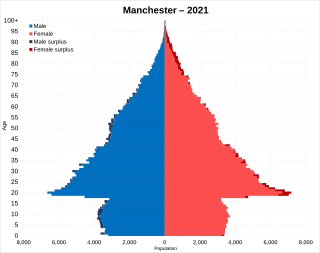
Manchester is a populous city in the North West of England. Its total population as of 2021 is 551,938.
Demography of the Tees Valley or Teesside metropolitan area of England is recorded with differing definitions. The area's fragmented data into different area definintions every other census after 1971 has meant a lack of clear lineal correlation analysis and anachronistic data.
References
- ↑ "Major Towns and Cities and Built-up Areas Swipe Map". geoportal.statistics.gov.uk.
- ↑ Council, Norwich City. "Town Deal Fund | Norwich City Council". www.norwich.gov.uk.
- ↑ "Custom report - Nomis - Official Labour Market Statistics". www.nomisweb.co.uk.
- ↑ "Custom report - Nomis - Official Labour Market Statistics". www.nomisweb.co.uk.